Brief History of Computer Game Platforms - Part 1
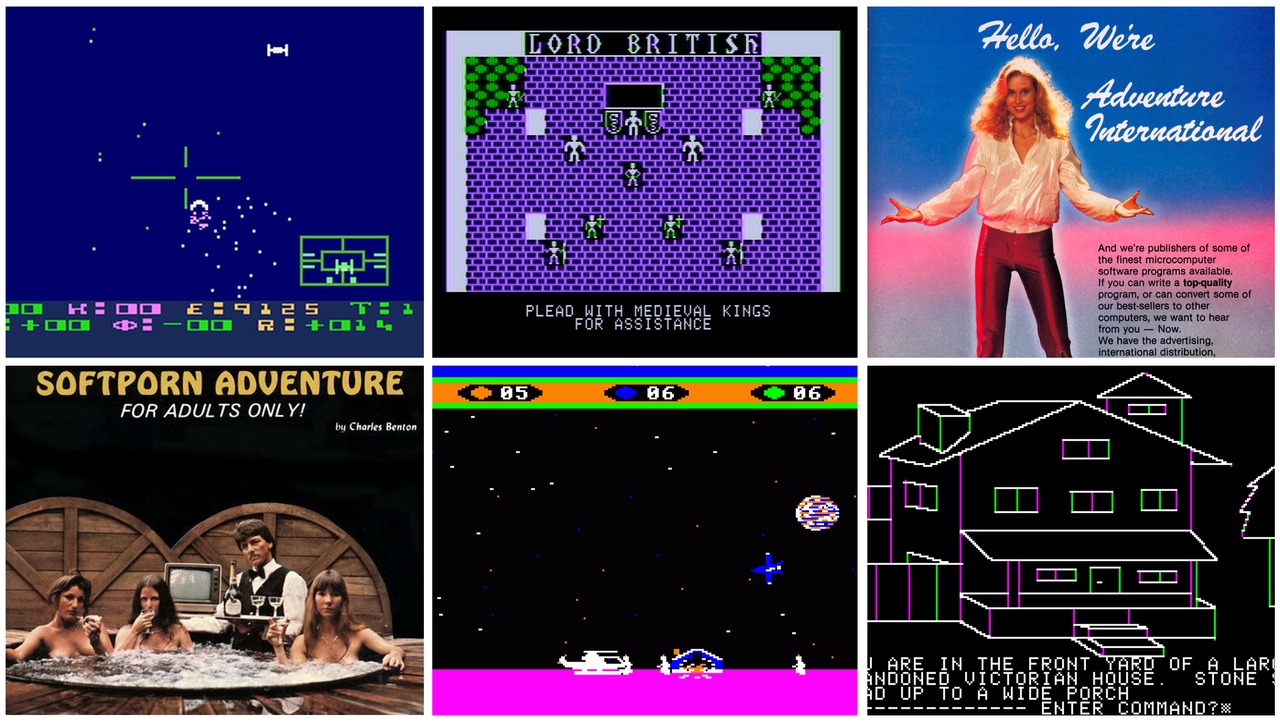
This is the first part of a quite lengthy article I wrote last summer, that tries to summarize the history of computer games and computer games platforms. This first part covers the early years of the 8-bit era, from 1977 to 1982.
As an amateur historian of computer games, I find it fascinating that in the '80s and part of the '90s, companies were developing their titles for so many different platforms. For example, take Lode Runner: it was initially released for Apple II, Atari-8 bit, Commodore 64, Vic-20 and IBM-PC. Then it was ported to ZX Spectrum, MSX, BBC Micro, Amstrad CPC, Atari ST, and Amiga. Ultima IV was released for Amiga, Atari 8-bit, Atari ST, C64, DOS, MSX, and the Japanese computers FM-7, FM-Towns, PC-88, PC-98, Sharp X1, and X68000.
Consider that porting a C64 game to ZX Spectrum is not like converting a game from PC to Mac. Each one of those computers was different from the others, so in most cases, the game had to be re-designed and programmed from scratch. Game developers must have had a lot of fun at the time.
To have an idea of the heterogeneity, have a look at the chart below. It shows, year by year, the number of games released for each platform. A lot of colors, right? It means plenty of games for many different platforms. Some received a lot of games, some very few games. Some of the machines were very relevant during a specific period, then they gradually disappeared.
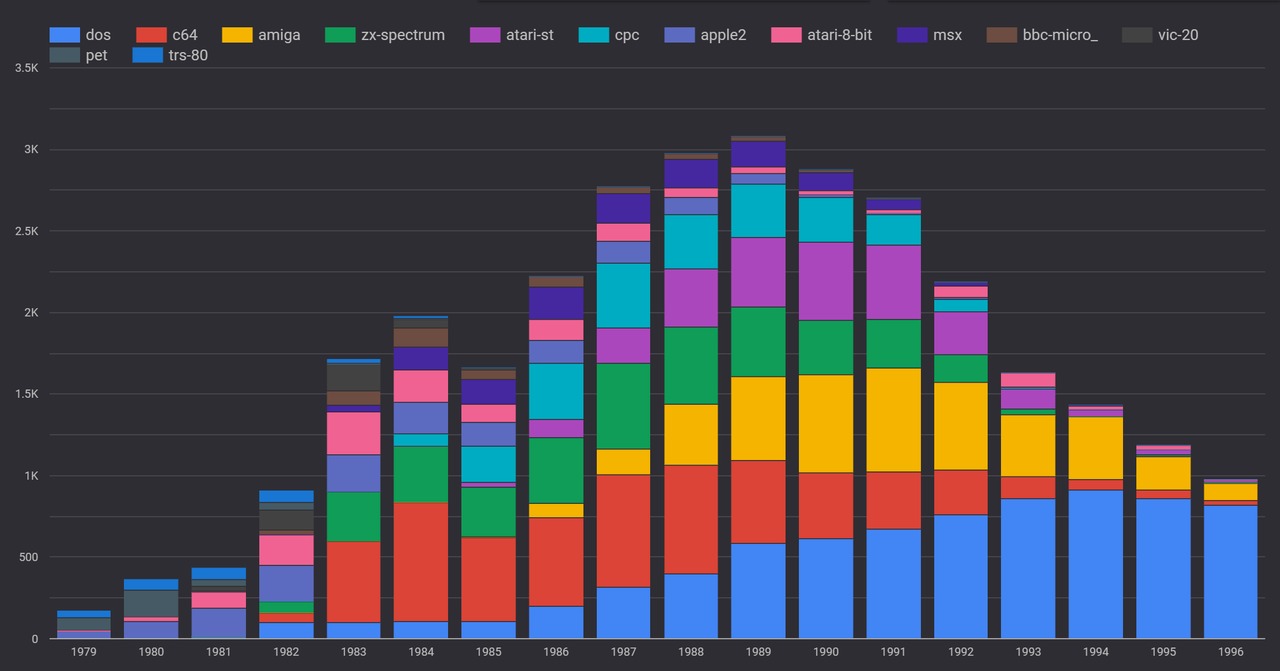
So in retrospective, not all home computers had the same impact on the gaming industry. Which ones were the main target of game developers? Which ones gave birth to the best titles? In short, which ones made the history of computer games and how?
These are some of the questions that I'll try to answer in this article. I will talk about the games, their creators, and the computers they were using. Let’s start from the beginning.
1977-1979
Obviously, home computers games could not exist before the invention of home computers, so we start from the glorious year 1977. It's called the year of the Trinity because the world saw the birth of the very first three personal computers*: Commodore PET, Apple II, and Tandy TRS-80.
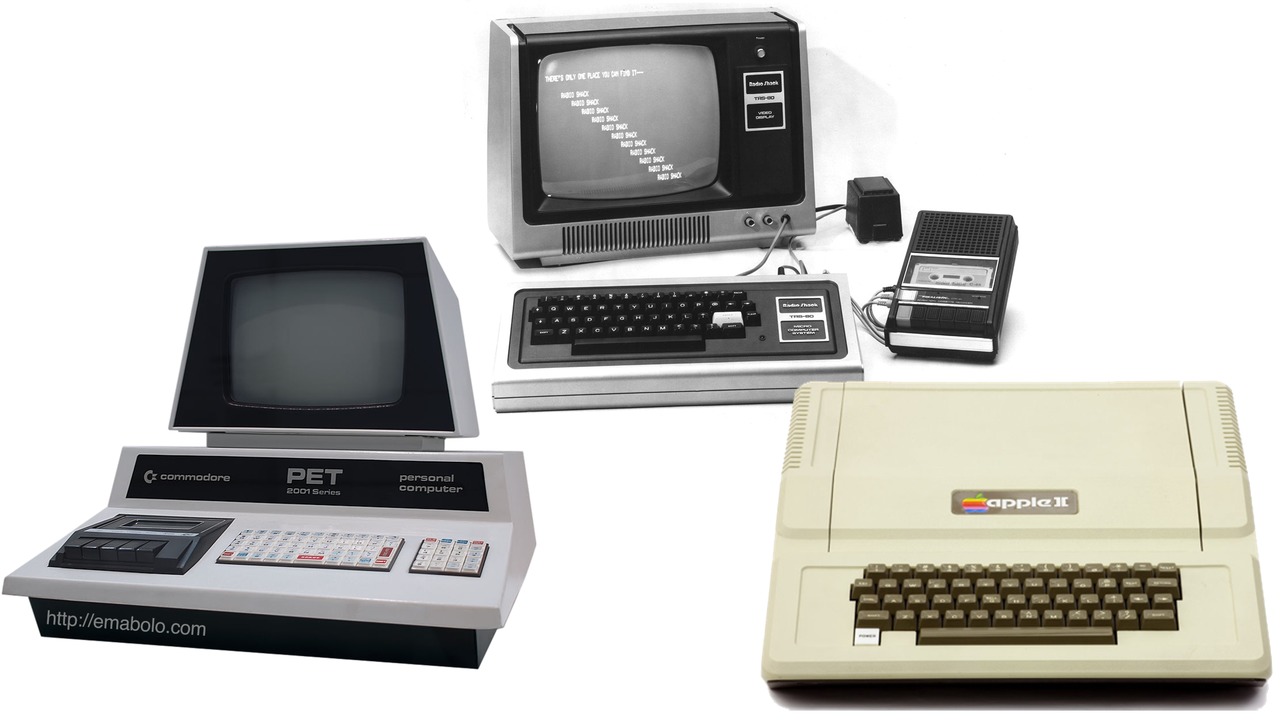
In case you are wondering, computer games were indeed invented before home computers; in fact, they were developed and played on mainframes. The Oregon Trail is probably the most famous example. Colossal Cave, the game that invented the text adventure genre, was programmed on a DEC PDP-10 mainframe, as well as Zork, another memorable adventure.
But of course, the market for computer games in 1977 was not significant. It started to be a reality in 1978, also thanks to a guy called Scott Adams, the creator of Adventureland. This game, programmed using the BASIC language on a TRS-80, is the first text adventure created for a home computer. Besides, the company that Adams opened after the success of this game, Adventure International, is the first example of business based on computer games. If you want, you can play Adventureland on your browser.
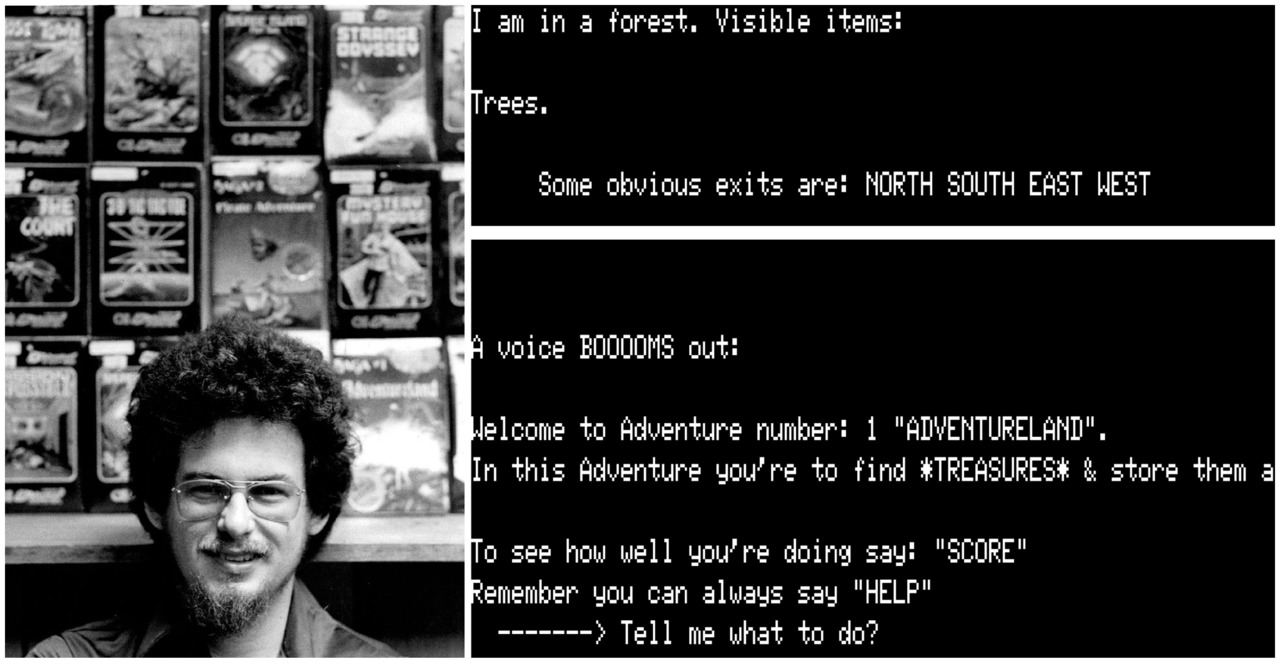
The Commodore PET didn't get Adventureland until 1980, but PET owners got more games compared to Apple II and TRS-80 users. According to MobyGames, 138 games were released in total for the PET in 1978 and 1979. One hundred thirty-eight games don't seem much, but it was the sign that the business was starting.
In fact, some legendary companies were founded between 1978 and 1979: Epyx (known as Automated Simulations until 1983), Infocom, Strategic Simulations, and Activision. Epyx's first release, in 1979, would be Dunjonquest: Temple of Apshai, the first dungeon-crawling RPG. It was developed initially for the PET and TRS-80 (an improved version would be released for the Apple II in 1980).
Another notable title released in 1979 is Flight Simulator I. Bruce Artwick, engineering student and pilot, conceived the idea of a flight simulator for his thesis. After graduation, he founded his company, subLOGIC, and released the first Flight Simulator for the Apple II at the end of 1979. It was one of the best selling titles at the time, and it was later purchased by Microsoft.
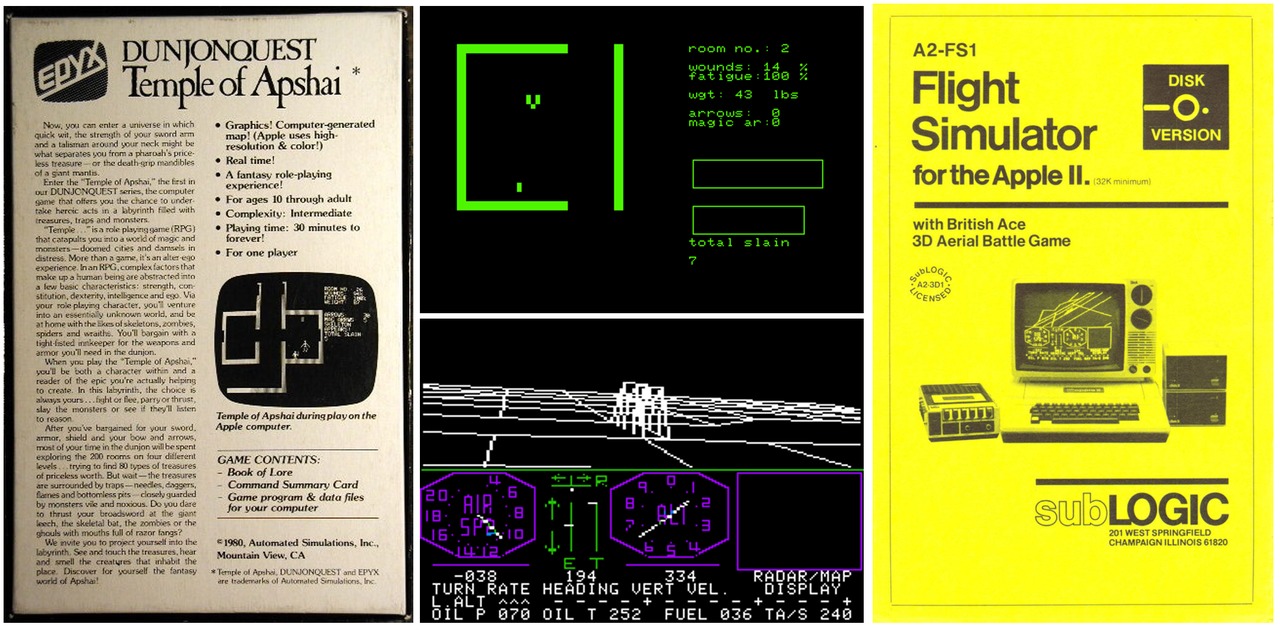
On the console side, it's worth mentioning that between the end of 1979 and the beginning of 1980, Warren Robinett created Adventure, for the Atari 2600. This title is famous for being the first action-adventure ever produced, and the first game containing an easter egg (and for the movie Ready Player One).
Finally, at the end of 1979, Atari released the first computers of the 8-bit series - Atari 400 and Atari 800 - designed by a team which included Jay Miner, a guy that years later would help create the Amiga.
For the launch of these computers, Atari engineer Doug Neubauer developed a first-person space combat simulator called Star Raiders. The game became a commercial success immediately.
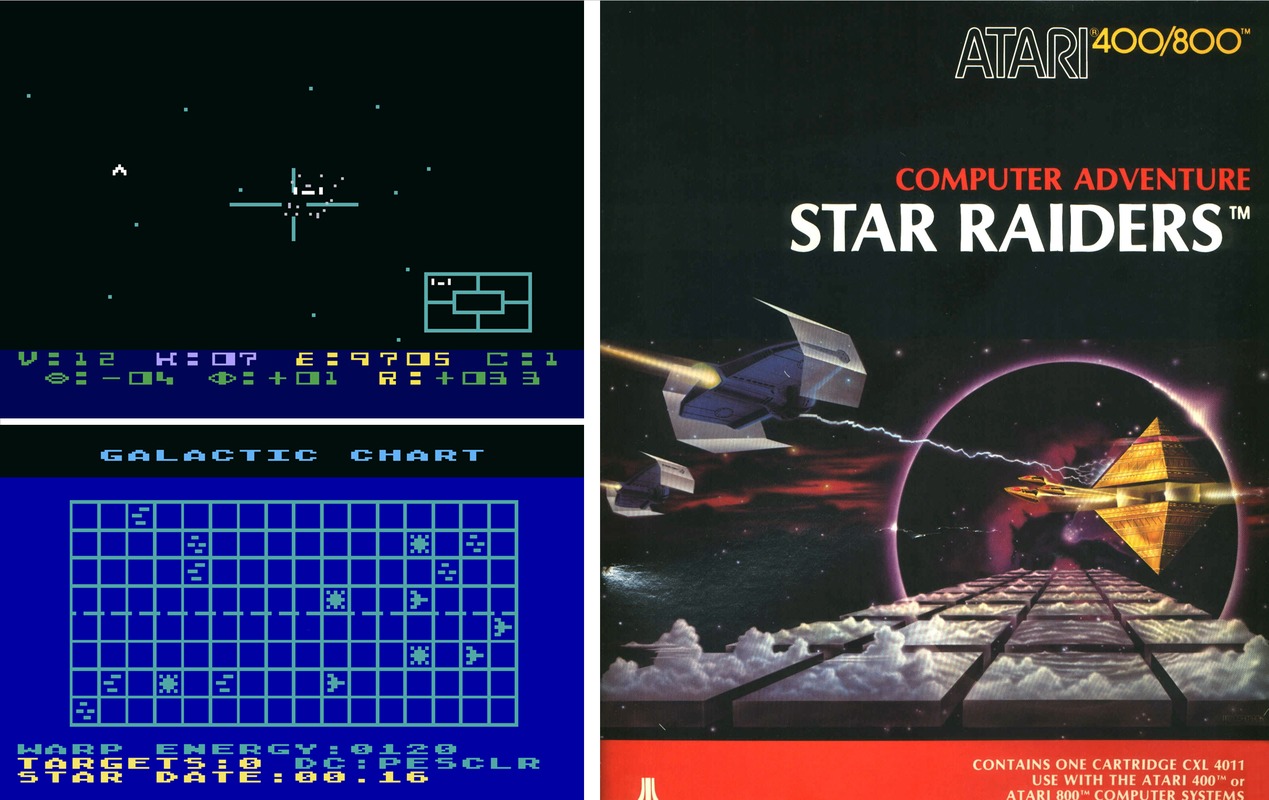
Try to play it, because you won’t believe it’s an 8-bit game created in 1979. Star Raiders is incredibly advanced, and it’s also one of the most influential video games ever created. It inspired Wing Commander, Elite and many other titles.
So, in the end, we haven't touched the '80s yet, but we already have text adventures, RPGs, flight simulators, space combat sims, and more. Not bad, considering this is just the beginning.
1980 - The rise of the Apple II
The growing trend of computer gaming continued the following year, 1980. This would be the peak of productions for the Commodore PET, with at least 160 titles released, including ports of famous arcades such as Space Invaders and Breakout.
In 1980 we also got the first space conquest game, Galactic Empire, created by Doug Carlston for the TRS-80. It's the first example of a 4X game (“explore, expand, exploit, exterminate”), even if the term would be used for the first time for Master of Orion. Doug and his brother Gary founded their company, called Brøderbund, in February 1980. It would become one of the most prestigious publishers of the '80s.
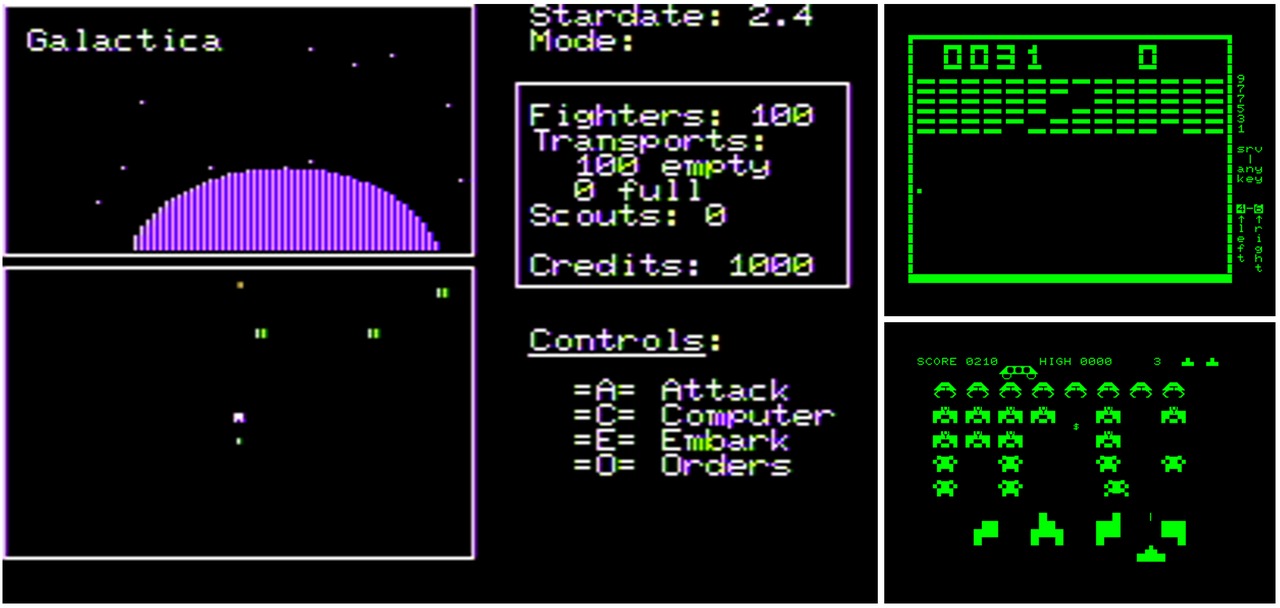
However, 1980 is mainly the year in which the Apple II starts to become relevant. So relevant, that a young couple, working hard on their Apple II, was going to change the history of videogames. But before talking about them, we need to spend a few words on the tech specs of those computers.
The PET and the TRS-80 didn't have colors and were not able to display bitmap graphics, only text. It was possible to draw simple pictures using special characters containing lines, angles, dots, and more. This was possible thanks to an extension of the ASCII character set (called "PETSCII" on the PET), but this is far from "real" graphics.
Instead, the genius of Steve Wozniak blessed the Apple II, since the beginning, with 280x192 pixels bitmap graphics in monochrome or 140x192 pixels with 4 colors. This gave an immense advantage to the Apple II in terms of gaming. Unfortunately, the first version of Woz and Jobs' computer had other problems, for example, the lack of decimal numbers BASIC (not mentioning the very high price). But in 1979 the Apple II Plus (or "Apple +" if you prefer) was released, and this model was much more mature, with an impressive 48K of RAM, floating-point BASIC, 6 colors (2 more than the original version) and a fast 5 1/4 floppy drive available as an expansion.
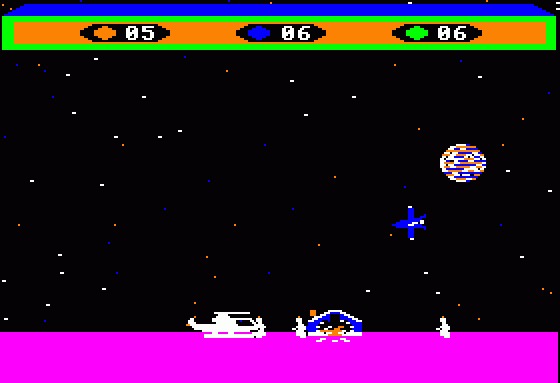
Knowing this, it should not surprise that the Apple II Plus became, almost immediately, the preferred platform of game developers.
One of them was Ken Williams, a young programmer that in 1980 with his wife Roberta created the first-ever graphics adventure: Mystery House. This is not only important because they created a new genre (before them, adventures had only text), but also because for the first time someone had solved the problem of translating hand-made drawings into computer graphics. Besides, there was not enough memory to store all the images pixel-by-pixel. The solution found by Ken to both problems was to save the set of instructions required to replicate the movements of Roberta's hand. You might call it vector graphics.
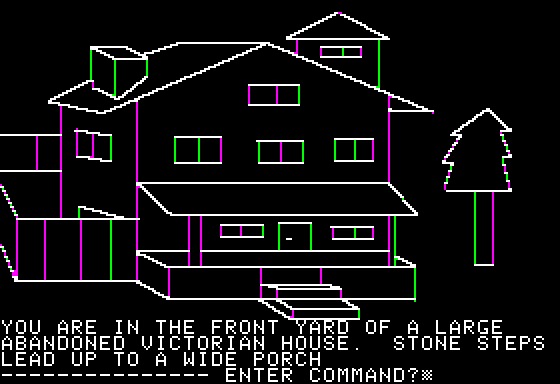
As you know, Ken and Roberta Williams founded one of the most prestigious companies in the games industry: Sierra On-Line (initially known as On-Line Systems). And of course, they are the creators of the King's Quest series.
Another owner of an Apple II Plus was Richard "Lord British" Garriott. He wrote his first game, Akalabeth: World of Doom, in AppleSoft Basic. The game, an action-RPG precursor of the Ultima series, was released in 1980. Initially, Garriott was creating the game using character graphics, with a top-down view similar to Dunjonquest. But then he decided to adopt a 3D first-person perspective for the dungeons, using the Apple II bitmap graphics.
It was the first time a computer role-playing game was using this kind of perspective. It's the same you will find later in Dungeon Master, Eye of the Beholder, Lands of Lore, and an infinite number of games.
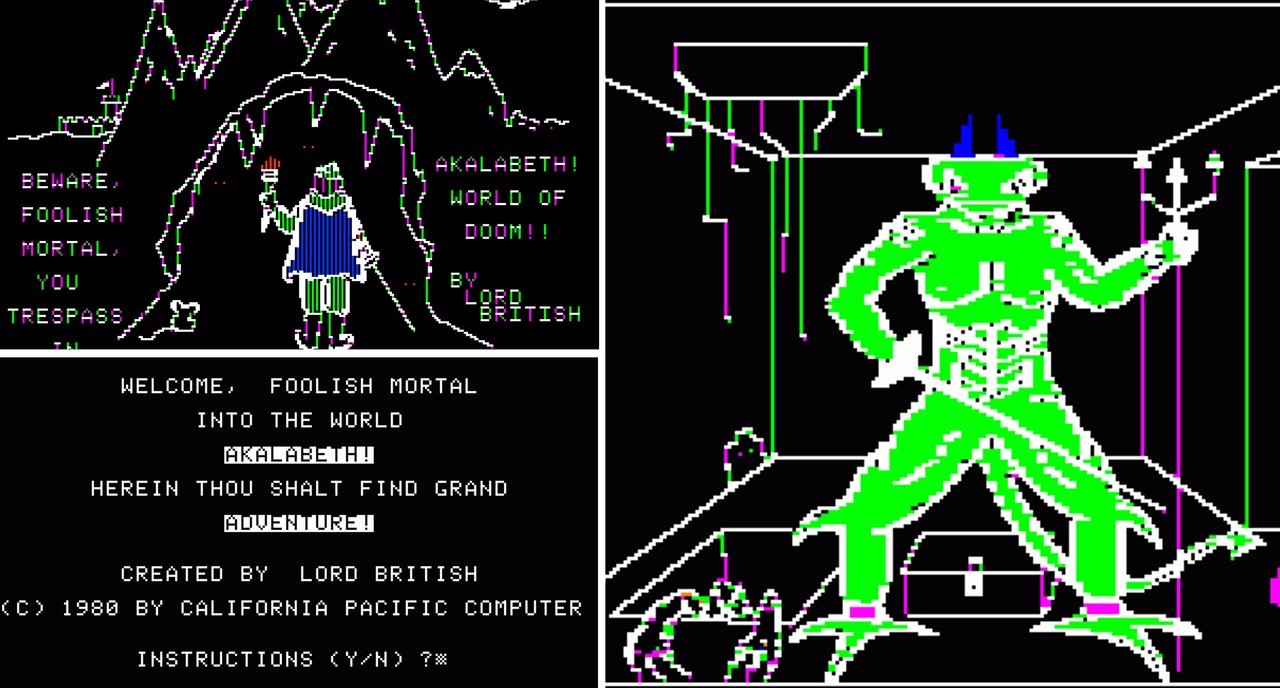
In total, according to MobyGames, 104 games would be released for the Apple II in 1980. Less than the PET, but there is no doubt that the Apple II had become the most decisive computer gaming platform.
1981 - Apple II dominates
In 1981, the career of the PET was over. Commodore was now focused on the promotion of the newborn VIC-20. It was a cheap machine, but unlike the PET, it had colors and proper sound (thanks to the VIC chip). So the first conversions of arcades such as Pac-man and Rally-X started to appear.
The Apple II sales were going well, with 210k units sold. In terms of games released, Apple II was dominating too, but it was not just a matter of numbers. While other platforms were releasing mainly arcades conversions, Apple II was clearly the platform of choice of the emerging game developers.
One example is Castle Wolfenstein, the first stealth-based game, known for having inspired Wolfenstein 3D by id Software. It was created by Silas Warner and his company Muse Software. Another one is Softporn Adventure. Programmed by Charles Benton in Applesoft BASIC, this text adventure is the first commercial erotic computer game. It was published by On-Line Systems, and Roberta Williams appears in the famous "hot tub ad" that generated so much controversy. Not many know that the first Leisure Suit Larry game, released in 1987, is a graphical adaptation of Softporn Adventure.

The same year Richard Garriott completed and released Ultima, the first chapter of one of the most popular video games franchises. The game was released on June 1981 for the Apple II. It was much more complex compared to Akalabeth and more RPG-oriented. To render the vast world, Garriott had to introduce another technical innovation: tile graphics.
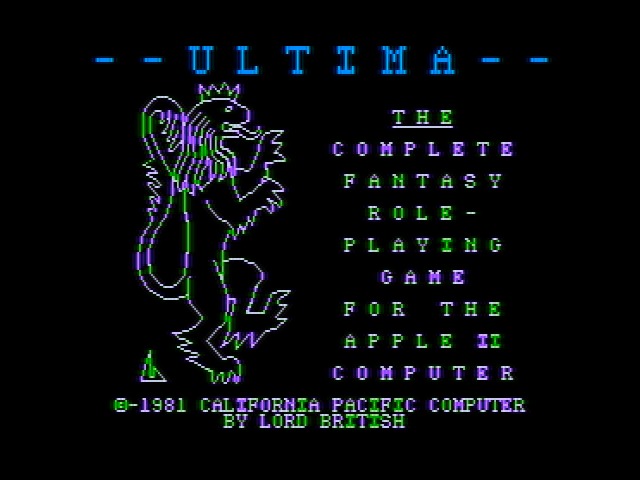
This would not be the only notable RPG, because Sir-Tech published Wizardry: Proving Grounds of the Mad Overlord, in September 1981. We are still talking about games developed for the Apple II.
At this point, I need to spend a few words on the Atari 8-bit series. The Atari 800 was released only a few months after the Apple II Plus, in 1979. It had a 6502B microprocessor (2x faster than the 6502), a sound generator and a separate graphics chip supporting hardware sprites, scrolling, and colors. The hardware was not so different from some arcade cabinets. In fact, the Atari 800 is often compared to the Commodore 64, which would be released almost 3 years after.
So, if colors and bitmap graphics gave an advantage to the Apple II, why can't we say the same for the Atari 800? Why didn't it become as popular as the Apple II among game developers? Apart from Star Raiders, and a few other titles that I will mention later, most Atari-8 bit games were coin-up conversions (or conversions of Apple II games).

Don't get me wrong: the Atari 8-bit series would be quite successful in the following years. The number of games released would match the games released for the Apple II. But why wasn't there any Richard Garriott or Ken Williams creating new concepts and making the history of videogames working on Atari 8-bit?
I don't have a final answer. I can only think that it was a combination of reasons: high price, non-professional look, lack of fast floppy disk support, and maybe more. Besides, Apple was working a lot with schools. Students had the chance to use the Apple II and fall in love with it. This has helped create a generation of young game creators (such as Richard Garriott) whose favorite machine was the Apple II.
If you have better answers, feel free to leave your comment below.
1982 - Transition to the next generation of 8-bit
Computer games business in 1982 was a reality. Companies like On-Line Systems or Infocom had grown and were now able to increase the size of the teams working on their titles.
Sir-Tech released the second chapter of Wizardry. Richard Garriott, after 18 months of development, was able to complete and release Ultima II. It was a hugely ambitious project, and if you see the credits, you notice how things have changed. It was no more a one-man band. Infocom released Deadline, one of the most advanced text-adventure ever realized, and Zork III, probably the best chapter of the popular series.
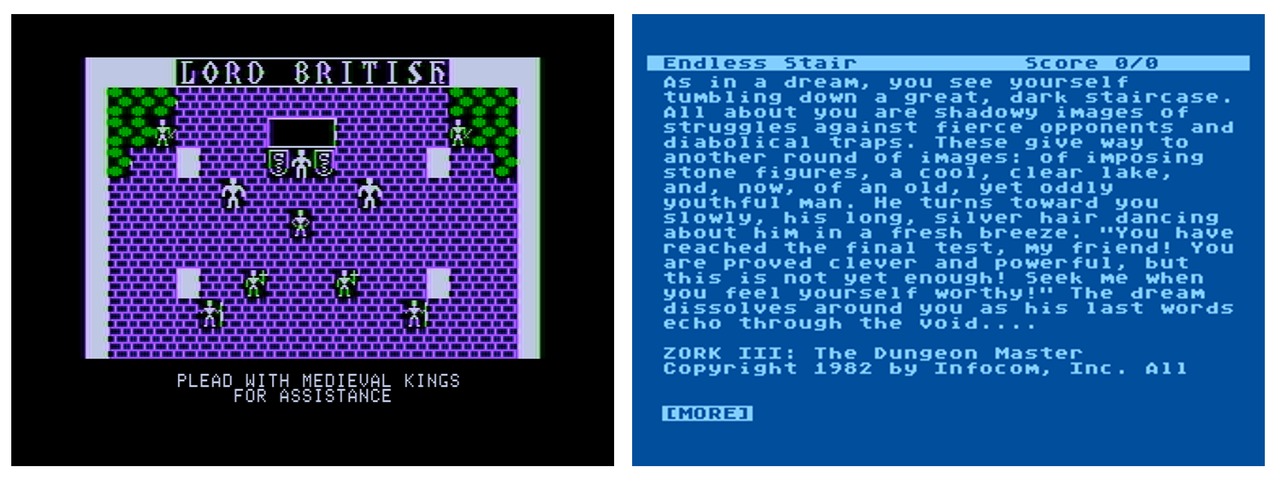
In May, Brøderbund released Choplifter for the Apple II. The game created by Dan Gorlin was a mix of arcade and simulation with a sort of cinematic experience that was unprecedented.
Apple II was the leading actor, with more than 200 games released. Atari 8-bit was not far in terms of volumes (188 games released according to MobyGames); but as we said before, almost all games were first developed for the Apple II and later ported to Atari. Anyway, the new generation of home computers had already arrived, and they were growing.
But first, let me open a quick parenthesis about consoles because I need to mention Pitfall! by David Crane, co-founder of Activision. Developed initially for the Atari 2600, this game was a huge success, and it is considered the father of the side-scrolling platforming genre. Several computer versions were created in the following years. Pitfall was the second best selling game on the Atari VCS, after Pac-Man (also released in 1982). Apparently, the vast expectations regarding the sales of Pac-Man for the Atari 2600 were one of the reasons of the North America video game crash of 1983-1985 (but this is beyond the scope of this article).

Back to computers, 1982 was the year of the cheap machines: VIC-20 and ZX81. Commodore sold more than 800k VIC-20 in 1982. It was also the peak of games productions for the Sinclair ZX81. Despite the commercial success of the two products, driven by aggressive pricing, the capabilities of the hardware were minimal, so the games were extremely simple.
In most cases they were adaptation or clones of popular coin-up. I remember one of them very well: Cosmic Cruncher. It was a clone of Pac Man for the Vic-20 and the cartridge was included in the Vic-20 box that my parents bought for me. Not very memorable for many, but for me it's the first computer game that I have ever played.
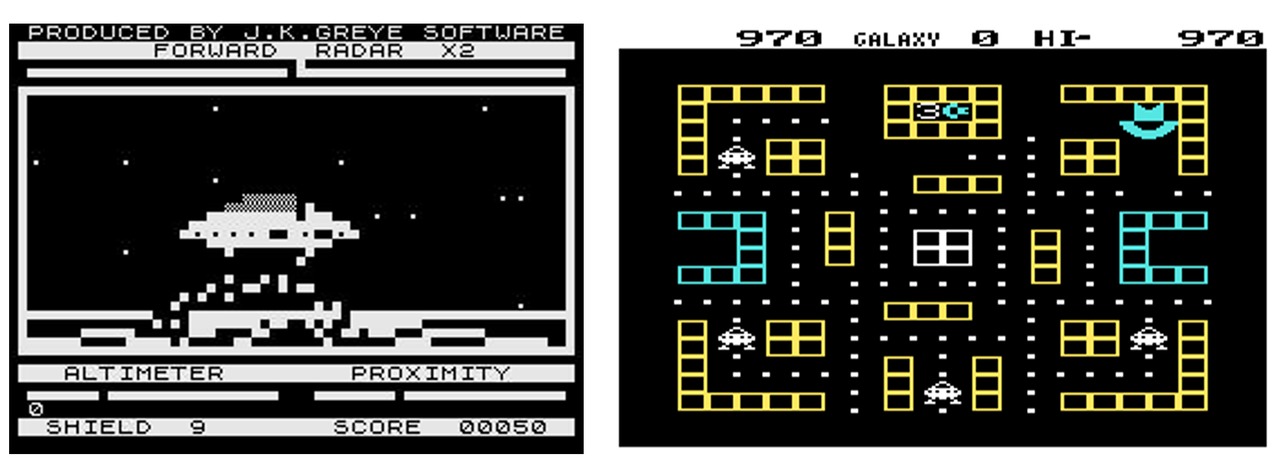
The two machines won't last long, but in a way, Commodore and Sinclair were just preparing the terrain for something much much bigger. In fact, in 1982 the two companies released two computers that were going to dominate the gaming scene in the following years: the ZX Spectrum and the Commodore 64.
There will be a lot to say about them, as well as about the BBC Micro, MSX, MS-DOS, and other platforms. This first part ends here. Stay tuned for the Part 2.
Originally published on GamesNostalgia



